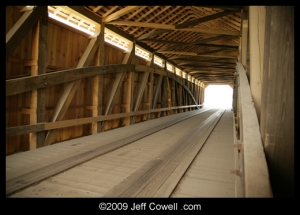Exposing your subject correctly.
The most important thing to understand in photography is exposure. It is essential that we capture the right amount of light to create a good photograph. This is true in both film and digital photography and the rules apply equally to both.
Several components come together to create a proper exposure. Although our cameras today can do terrific things with exposure in automatic mode, I’m here to help you understand how to do that on your own. By learning this you’ll be able to be far more creative with your photography than running in auto mode will ever allow.
For digital photographers it’s important for you to get a good understanding of exposure even more than it is for a film photographer. In digital you do have the ability to edit your photos before they’re printed, but it’s critical that you have the good data in the image you capture. That’s where it becomes essential to understand exposure and apply that knowledge to record a good quality image in the first place.
The Sunny 16 Rule: If your subject is in full sunlight – set your aperture to f/16 and your shutter speed at 1/ISO.
Elements that we must consider for creating a proper exposure are:
- ISO Speed – The speed at which our camera is recording the image.
- Amount of light on our subject.
- F/stop – amount of light we allow to come through the lens.
- Shutter Speed – How long we allow the light to come through the lens (this is directly related to the ISO Speed).
 It is important to use the correct f/stop for your subject (to control depth-of-field) and the correct shutter speed (to control motion), so we must bring these together with our ISO to get a correct exposure, based upon how much light is on our subject. It is generally easy for you to define what your subject is, it’s what you want to record for others to see. Now you need to take it a step further and pay attention to how much light is on that subject. If you set your camera to Aperture-Priority (assuming your desire is to achieve a specific depth-of-field), you can point your camera directly at the subject and press the shutter release button half-way to get a meter reading. The camera will determine what shutter speed you need for taking a well-expose photo of the subject. If you step back to where you want to take the shot from, and the shutter speed changes, you’re not going to get a proper exposure of your main subject. This can happen for a lot of reasons, including the subject being in front of a very bright or dark background. To avoid this problem, all you need to do is switch the camera to manual mode and lock in the aperture and shutter speed you determined when you took your meter reading in Aperture-Priority mode. Then when you move back to take the shot, you might get a meter reading that is off, but you know that it is the correct exposure for your main subject.
It is important to use the correct f/stop for your subject (to control depth-of-field) and the correct shutter speed (to control motion), so we must bring these together with our ISO to get a correct exposure, based upon how much light is on our subject. It is generally easy for you to define what your subject is, it’s what you want to record for others to see. Now you need to take it a step further and pay attention to how much light is on that subject. If you set your camera to Aperture-Priority (assuming your desire is to achieve a specific depth-of-field), you can point your camera directly at the subject and press the shutter release button half-way to get a meter reading. The camera will determine what shutter speed you need for taking a well-expose photo of the subject. If you step back to where you want to take the shot from, and the shutter speed changes, you’re not going to get a proper exposure of your main subject. This can happen for a lot of reasons, including the subject being in front of a very bright or dark background. To avoid this problem, all you need to do is switch the camera to manual mode and lock in the aperture and shutter speed you determined when you took your meter reading in Aperture-Priority mode. Then when you move back to take the shot, you might get a meter reading that is off, but you know that it is the correct exposure for your main subject.
You can start out with your camera in manual mode and take the meter reading to set the proper exposure. This is where you must learn to pay attention to the meter in your viewfinder and read it correctly. If it is showing a minus (-) reading, you are under-exposed, and a plus (+) reading, you are over-exposed. Assuming we have selected a specific aperture (f/stop), we would simply change our shutter speed and/or our ISO to get the meter reading to the middle of the scale. In many cases, I will use my hand or arm to get a meter reading when I’m shooting people who are in the same lighting situation that I’m in. That way I don’t have to move closer to them to get a reading, and I can still be very accurate in my exposures.
Please be sure you understand: I’m talking about getting the proper exposure on your main subject here. If that means that the background is going to be under or over exposed, that’s just the way that it is sometimes. That’s also a good reason to shoot RAW digital images that allow for more dynamic range (meaning you can make broader exposure adjustments after the shot).The photo that I’ve included here is well exposed inside the bridge, but the background on the far side of the bridge is overexposed dramatically. That was intended because I wanted to show the structural details inside the bridge, not the shabby trees at the far end.
Stay tuned for more entries that will help you learn more about photography, or visit my website at http://www.jeffcowell.com and register for my Photography Schools, Seminars or Excursions.
©2009 Jeff Cowell, jeffcowell.com







